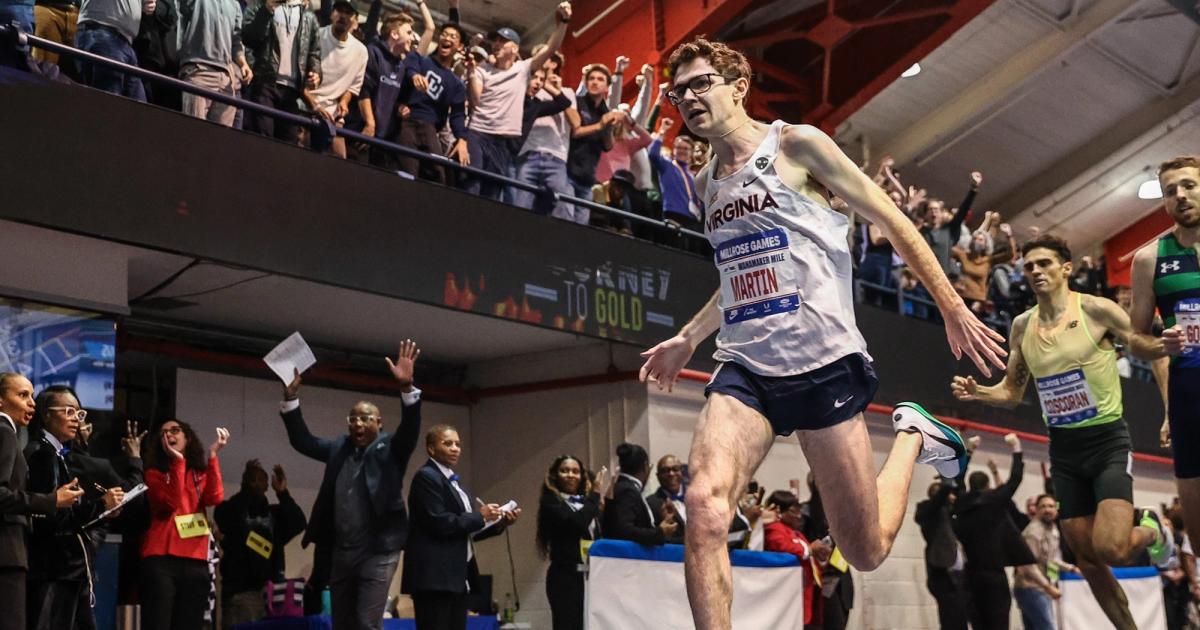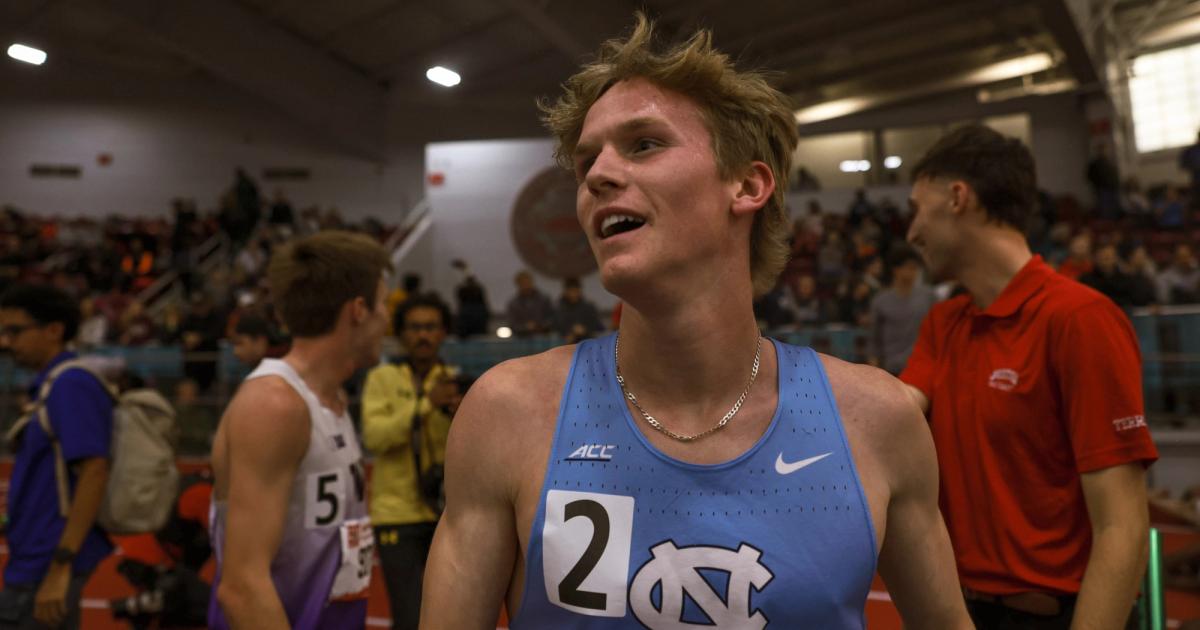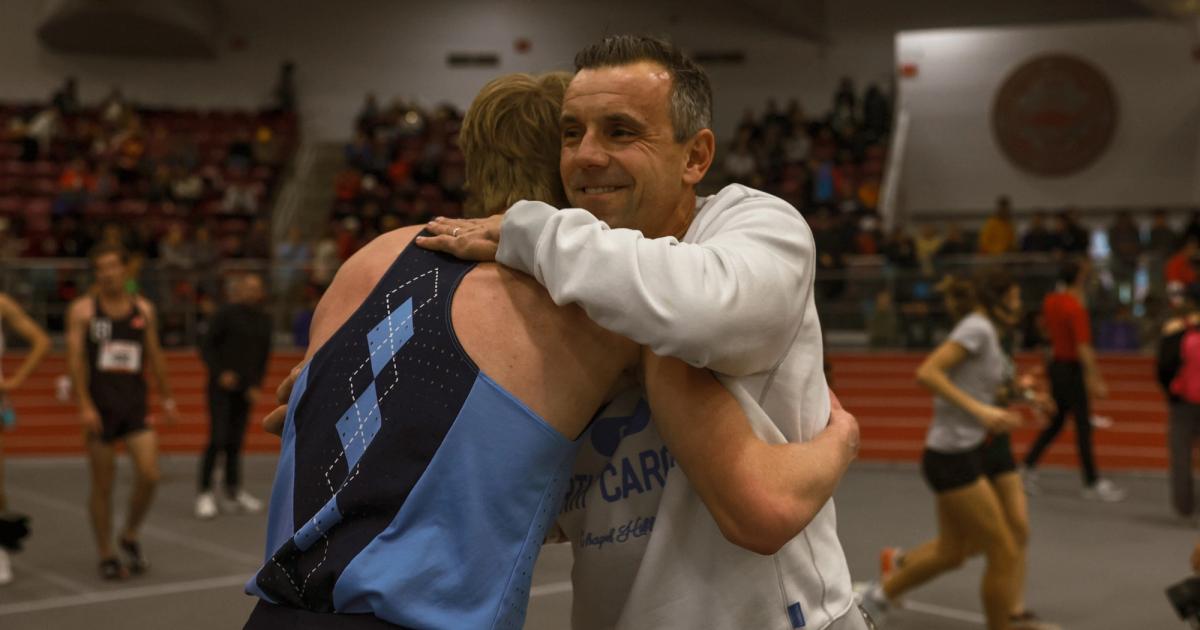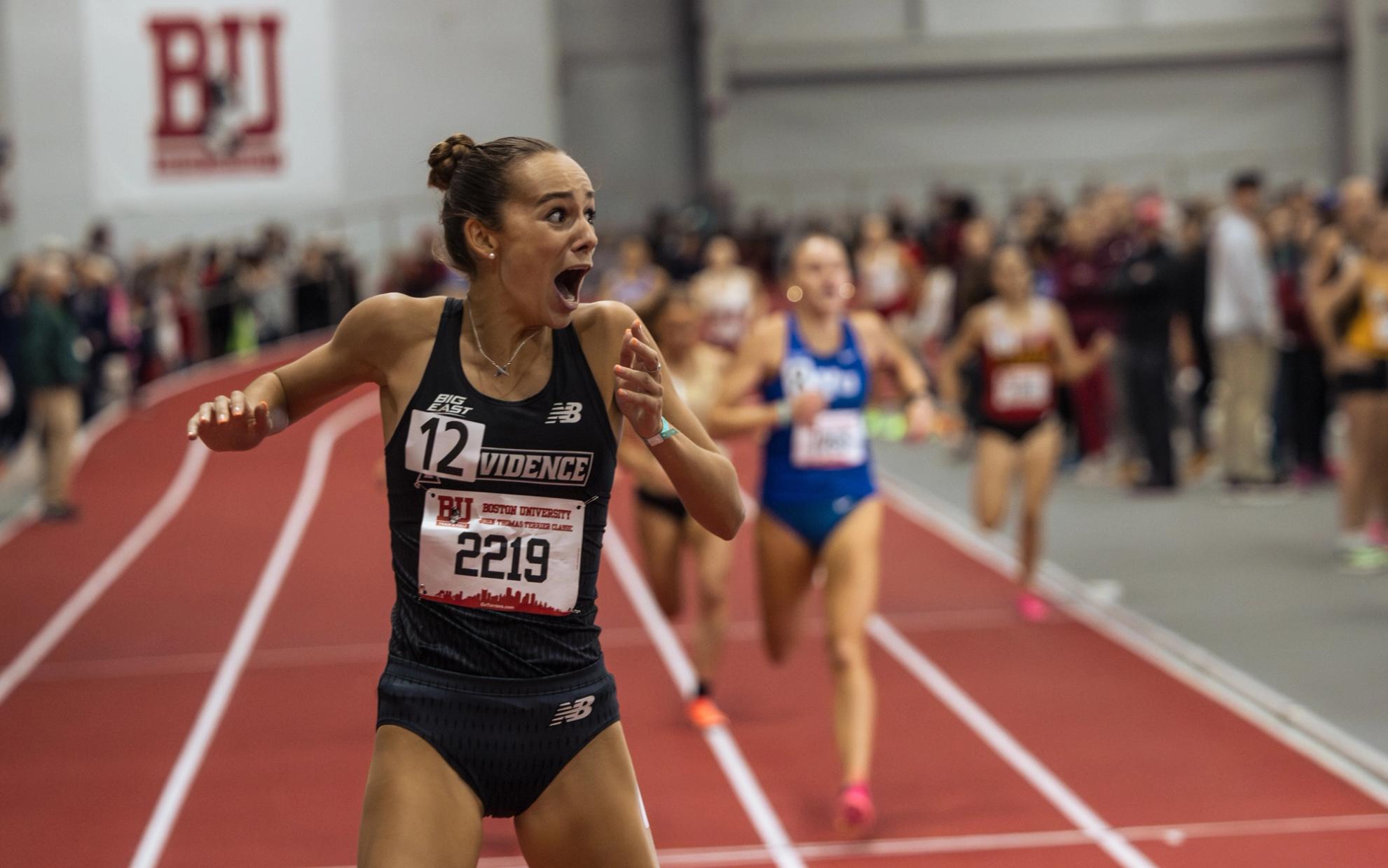By David Melly
February 19, 2025
Hardly a day goes by in 2025 without an old record being broken and a new standard being set. The head-spinning nature of how high the bar continually being raised and how quickly athletes rise to meet it has us old-timers scratching our heads and griping about NCAA cutoff times.
There are many theories as to why times have gotten faster overall (each coming with a varying degrees of credibility and boring-ness): super shoes, super tracks, super baking soda, to name a few. But there’s a secondary effect at play that gets less attention: the “Après moi, le déluge” phenomenon.
Roger Bannister is famously reported (albeit never confirmed) as quoting the 18th-century French saying—literally: “after me, the flood”—following his historic dip below the four-minute barrier in 1954. The idea is that all it takes is one person to break a barrier to inspire a wave of others to match a once-unprecedented feat.
Another great philosopher, Oregon distance coach Shalane Flanagan, shared a similar perspective after watching her athlete Silan Ayyildiz set the NCAA record in the women’s mile last weekend. She believes that the sea change in collegiate distance running comes down to a simple truth: “if you can see it, you can be it.”
That sentiment makes a ton of sense coming from the coach who’s guided four different women to mile performances 4:30 or faster (and a fifth at 4:32.40) this season alone. And there’s literal linearity for at least two of those athletes: Wilma Nielsen running 4:25.89 in January at the Dr. Sander Scorcher, then NCAA #3 all-time, and her training partner Ayyildiz following suit with a collegiate record 4:23.46 at BU three weeks later. If you can stick to the collegiate leader in workouts, why couldn’t you be the next number one?
But that doesn’t explain the other part: Shortly behind Ayyildiz in Boston came not one, not two, but five other top-15 all-time performances. Prior to Saturday, only seven collegians in history had run sub-4:27. On Saturday, six did it at one meet. Perhaps the most impressive of these runs came from NC State junior Grace Hartman, who ran an 8:46.57 3000m across town at New Balance the day before, then came back 24 hours later to run the third fastest time in NCAA history out of heat 3. Hartman may have only been the second collegiate finisher on the day, but Ayyildiz finished fifth in heat 1 behind a wall of professionals, while Hartman won her race by 10 seconds.
And it wasn’t just the mile lists that got a rewrite this weekend. Five of the ten fastest 3000ms in collegiate history were run this weekend (four at the UW Husky Invite), led by BYU runner Lexy Halladay-Lowry’s 8:40.60 at NCAA #3 all-time. Olympians Karissa Schweizer (2018) and Jenny Simpson (2009) are the only remaining names on that top-ten list whose times were posted prior to 2023. Similarly, the number of college women under 15 minutes in the 5000m indoors has quadrupled this season, from one to four.
Where did this explosion in women’s distance running come from? The boring, process-y answer comes back to advances in technology and training. But the more intriguing answer may all come down to a 22-year-old New Yorker by the name of Katelyn Tuohy.
Oh yeah, remember her? Injury may have abbreviated Tuohy’s 2024 season, taking some of the shine off her first full year as a professional, but she’s back in action with a pair of decent races at the Armory, her signature track (a 4:25.54 mile at Dr. Sander and an 8:47.34 3000m at Millrose). But let’s travel back in time, to the year 2022.
Tuohy is primarily known at the time as arguably the greatest cross country runner the U.S. high school circuit had ever seen, but her first two years at NC State were relatively low-key as the teen phenom adjusted to a new level of competition. She finished 24th and 15th in her first two NCAA XC championships, a strong start for a true(ish, pandemic eligibility being complicated) freshman/sophomore. Her big breakout on the NCAA scene was a 5000m title outdoors after two runner-up finishes indoors, in a then-personal best of 15:18.39.
But the next academic year was when Tuohy really came into her own—and laid the groundwork for where collegiate distance running would soon go. Hot on the heels of her first national XC title in fall 2022, Tuohy went on a tear of an indoor season, running 15:15.92 for 5000m, 4:24.26 for the mile, and 8:35.20 for the 3000m, the latter two being collegiate records at the time. After pulling off the 3000m/5000m double indoors, she ran 15:03.12 outdoors in May, the fastest in-season mark by a collegian. Not since Jenny Simpson (then Barringer)’s epic conclusion to her college career in 2009 had a female NCAA distance runner moved the goalposts so dramatically across so many distances.
The next year, of course, Parker Valby’s Bowerman-worthy performance included several record-breaking marks at 5000m and 10,000m, and Valby became the first collegiate woman in history to break 15 minutes indoors. And following Ayyildiz’s record-setting run at BU, Tuohy’s only remaining record is her 3000m. (She’s still the only NCAA woman ever to break 8:40 indoors.) It’s remarkable how, only two years later, it’s easy to forget just how mind-boggling Tuohy’s marks felt at the time—because so many others have risen to the standard she set.
If you’re searching for a more scientific-based explanation of this rising tide in performances, best of luck. The “COVID eligibility” wave has crested and receded, and the vast majority of the all-time top-ten performances belong to collegiates who aren’t 25 years old. Super spikes were around far earlier than 2023, and so was the BU track. And it’s certainly possible that every single NCAA athlete is now taking bicarb before races, but that feels unlikely.
The simplest explanation may be that generational athletes like Katelyn Tuohy can still have a Roger Bannister-like effect on their particular level of running, and now we’re seeing the results. Whether it’s a conscious effort on the part of individual athletes to emulate their role models, a shifting of expectations by the coaches guiding them, or a subtle, subconscious change in our shared perspective on the sport, it really does seem like seeing is believing.

David Melly
David began contributing to CITIUS in 2018, and quickly cemented himself as an integral part of the team thanks to his quick wit, hot takes, undying love for the sport and willingness to get yelled at online.




